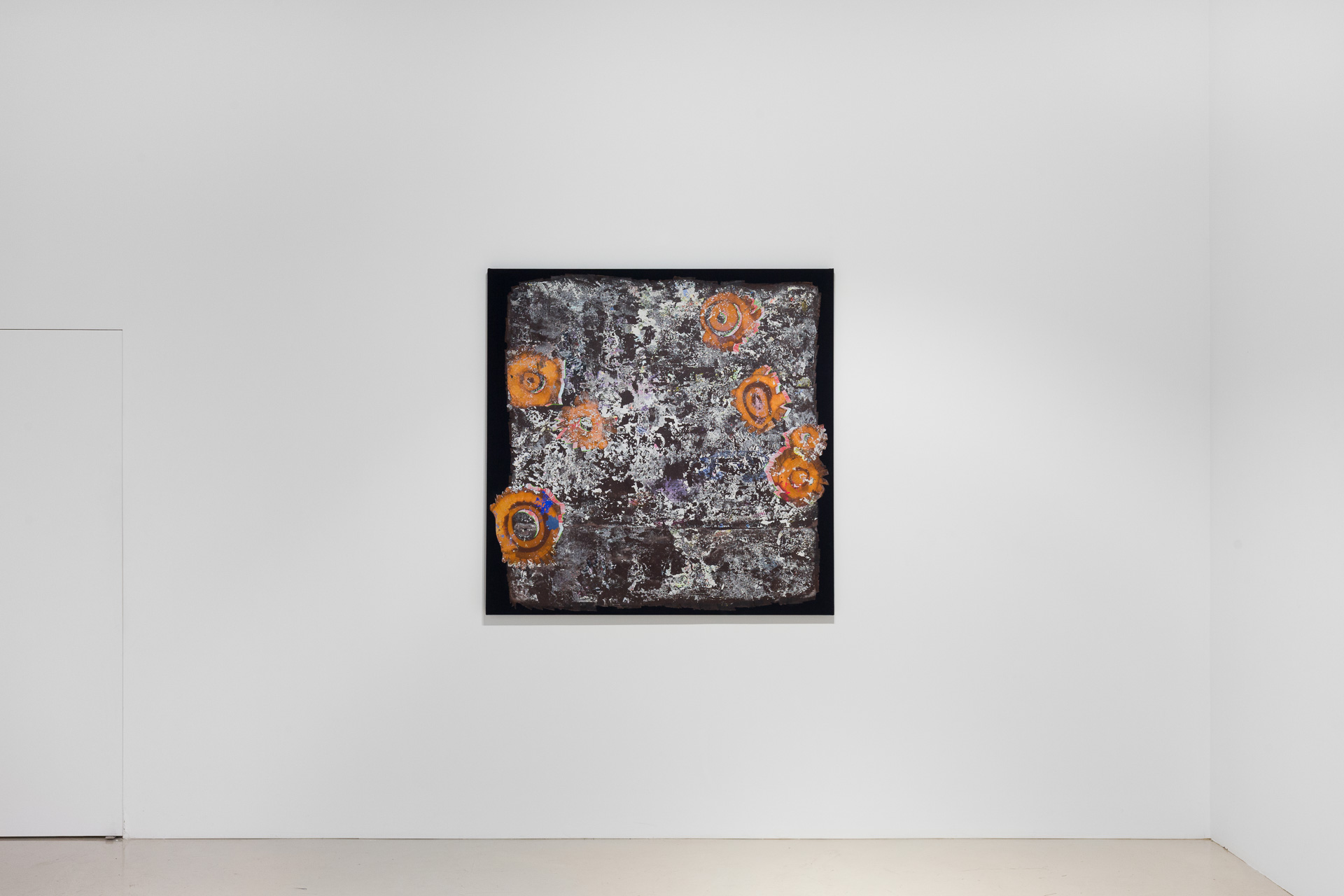Description
Emma sent me a message about insides and outsides. I think she is sending us all a message about insides and outsides. For us to know these aren’t two separate places. And that we are both and they are more or less one. I don’t know whether I am looking at something vast from a great distance, or an extreme close up view of something usually unseeable, an expanse of outside world or the hidden inside of something else. And this feeling doesn’t go away when I move into the gallery. Because Emma’s gallery window marks an elusive boundary, not between outsides and insides necessarily but a threshold nonetheless. It’s a weather pressure system, a coalescence, a space for overlaps and ambiguity rather than a line that can simply be crossed between distinct zones or bodies. Whatever, I think passing through it is an invitation to renegotiate terms in general.
….
In my mind there is a connection between this and the uncertainty or ambiguity of painterly representation, the potential both-ness of its perspective when regarded outside the bounds of a binary distinction between abstract and figurative image making that has been (tiresomely?) foregrounded in talk about painting for such a long time. I admit that I am prone to see pictures and make stories wherever I’m looking. Here, I see fingers that become more and less than what they are, everywhere. And squamules — shapes that describe the overlapping scales of lichen that grow thin and crust- like, adhering tightly to a surface (like paint again), free at their tips of leafy lobes, or shrubby growths of tufts. Powdery or jelly-like or stringy like matted hair, or wispy like teased wool. Or altogether structureless. There is a beautiful abstraction that painting performs, whether it is ‘abstract’ or not. At the same time, the hands and body are so present in Emma’s paintings. Behind them and beside them and before and after them. Movement constitutes a form of knowledge all its own. There is an unavoidable embodied quality to both producing and receiving messages. So whilst not strictly ‘figurative’ her paintings employ a figurative language of sorts in the way they engage the imagination and sensory responses of her audience.
….
Looking at these paintings I feel a sudden urgency to return to some work or another of my own. I feel that there is a direct transfer of pleasure, an excess that’s available to share in, a drive to engage that you activate: Drawn to the slubby grain of a particular textile, tougher after dying with bleach, washing and drying. Finding ways of manipulating this fabric, working across a section of concrete, borrowing a gesture, becoming lichen and moving at the pace of palms, touching surfaces. Lichen Lace. Movement and time. Feeling and nerve.
– Maggie Brink, 2020

